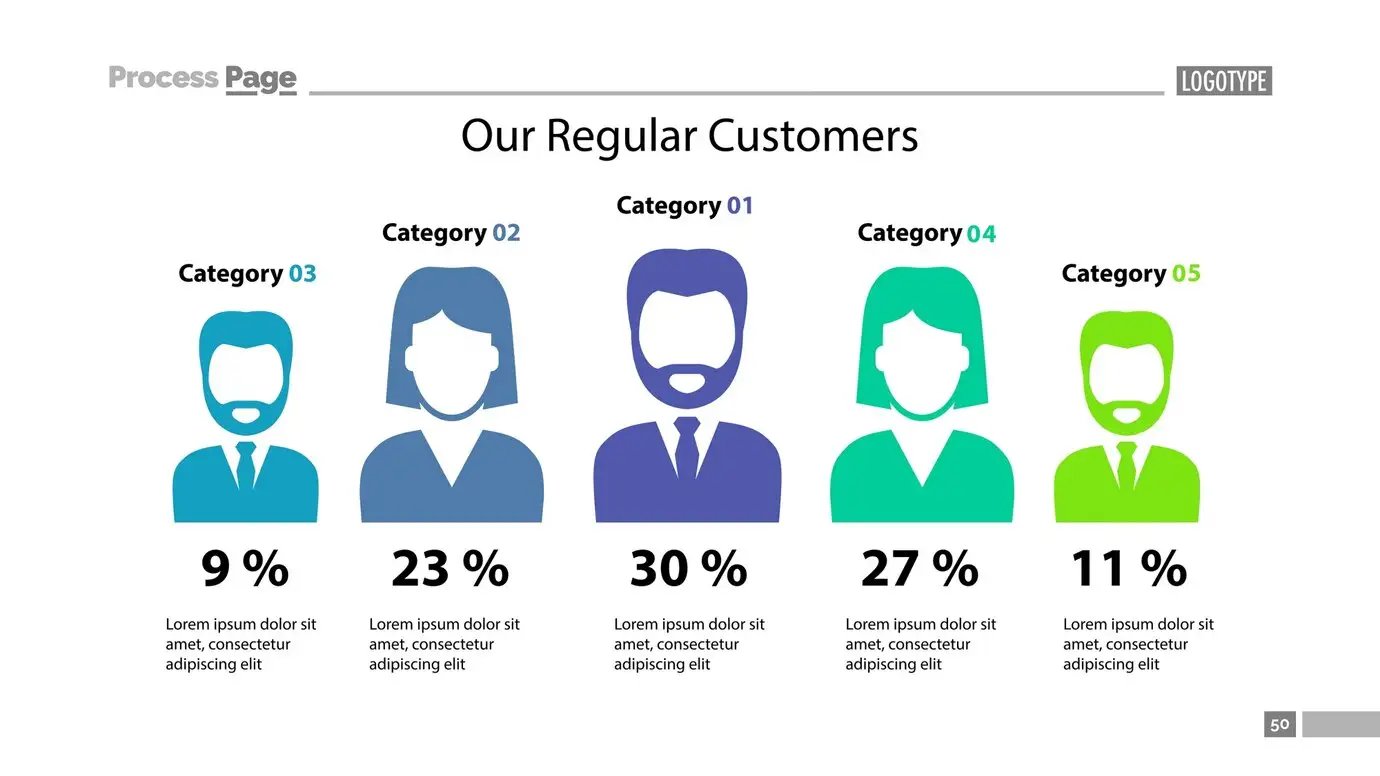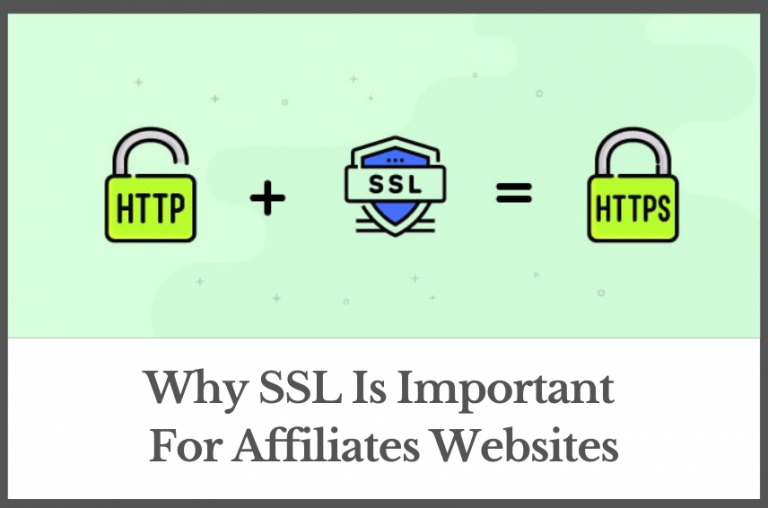How To Find Affiliate Marketers For Your Product
by Abhigyan
Are you ready to unlock the full potential of your product and take your business to new heights?
If so, you’re in the right place. Welcome to the ultimate guide on how to find affiliate marketers for your product.
As you may have discovered by now, traditional marketing methods can only take you so far.
To truly thrive and expand your reach, you need to tap into vast networks of influencers, bloggers, and content creators who are eager to promote products they believe in.
But finding the right affiliates for your product isn’t always easy. It requires careful planning, strategic outreach, and a deep understanding of your target audience.
In this comprehensive guide, I’ll walk you through everything you need to know to find and recruit top-notch affiliates who can help you skyrocket your sales and achieve your business goals.
So, if you’re ready to take your product to the next level and unleash its full potential, let’s dive in and discover the potential of hiring affiliate marketers.
Disclosure: Some of the links I share might be affiliate links. If you click on one and make a purchase, I may earn a small commission as a thank you. But don’t worry, it won’t cost you anything extra. I only recommend stuff I genuinely believe in. Your support helps me keep creating awesome content. You can read my full affiliate disclosure in my disclaimer page.
IN THIS POST :
ToggleUnderstanding The Importance Of Affiliate Marketers
Affiliate marketers are the unsung heroes of modern marketing. They’re the driving force behind many successful businesses, helping brands reach new audiences, drive sales, and boost revenue.
But what exactly makes affiliate marketers so important?
First and foremost, affiliate marketers bring credibility and authenticity to your brand.
Unlike traditional advertisements, which can often come across as salesy or promotional, affiliate marketing relies on genuine recommendations from trusted sources.
When an affiliate recommends your product or service to their audience, it’s seen as a personal endorsement – and that carries a lot of weight.
Furthermore, affiliate marketers have access to vast networks and communities that may be out of reach for many businesses.

Whether it’s niche blogs, social media followings, or email lists, affiliates have built loyal audiences who trust their recommendations.
By partnering with affiliates, businesses can tap into these networks and leverage their influence to reach new customers.
Another key benefit of affiliate marketing is its cost-effectiveness.
Unlike traditional advertising channels, where businesses pay upfront for exposure, affiliate marketing operates on a performance-based model.
This means you only pay for results – whether that’s clicks, leads, or sales. This makes it a low-risk, high-reward strategy for businesses of all sizes.
Defining Your Ideal Customer Persona
Before you can effectively recruit affiliate marketers, you need to have a clear understanding of who your target audience is.
This starts with defining your ideal customer persona – a semi-fictional representation of your ideal customer based on market research and real data.
To create your ideal customer persona, start by gathering information about your existing customers.
What are their demographics, such as age, gender, income level, and location? What are their psychographics, such as interests, hobbies, values, and lifestyle?
The more detailed and specific you can be, the better.

Next, think about their needs, pain points, and preferences. What problems are they trying to solve, and how does your product or service address those needs?
What features or benefits are most important to them? Understanding these factors will help you tailor your messaging and offerings to resonate with your target audience.
It’s also important to consider the buying journey of your ideal customer. What steps do they take before making a purchase, and what channels do they use to research products?
By mapping out their journey, you can identify key touchpoints where affiliate marketing can play a role in influencing their decision-making process.
Understanding Customers' Needs and Preferences
Once you’ve defined your ideal customer persona, the next step is to understand their needs and preferences.
What motivates them to make a purchase, and what factors influence their decision-making process?
You need this data so that you can provide detailed information to your affiliate marketers, which in turn will help them to target the right audience.
Start by conducting market research to gain insights into the needs and preferences of your target audience. This could involve surveys, focus groups, interviews, or analysis of existing data.
Look for patterns and trends that can help you identify common pain points and desires among your audience.

Next, think about how your product or service can address those needs and preferences.
What unique value proposition does your offering provide, and how does it solve your customers’ problems?
Understanding the benefits of your product from your customers’ perspective will help you communicate effectively with potential affiliates and convince them to promote your product.
It’s also important to consider the communication preferences of your target audience. How do they prefer to receive information, and what channels do they use to engage with brands?
Whether it’s social media, email, blogs, or other channels, make sure your affiliate marketing efforts are aligned with the preferences of your audience.
Crafting An Irresistible Offer
Crafting an irresistible offer is the key to attracting top-notch affiliate marketers who will enthusiastically promote your product.
In order to do this, you need to identify and highlight the unique selling points (USPs) of your product.
What sets it apart from similar offerings in the market?
Whether it’s innovative features, superior quality, or exceptional value for money, make sure to showcase what makes your product special.
Emphasize the benefits and advantages that customers will experience by using your product, and explain why it’s a must-have for your target audience.

In addition to highlighting your product’s USPs, you also need to create compelling incentives for affiliate marketers to join your program.
While commissions are a standard form of incentive, consider going above and beyond with additional perks and rewards.
This could include bonuses for reaching sales targets, performance-based incentives, exclusive access to new products or promotions, or even personalized support and training.
By offering attractive incentives, you can motivate affiliates to actively promote your product and drive more sales.
Researching Potential Affiliates
One of the most efficient ways to find potential affiliates is by utilizing affiliate networks and platforms.
These online marketplaces connect businesses with a vast network of affiliate marketers, making it easier to find partners who are actively seeking opportunities to promote products in your niche.
Browse through affiliate networks such as ShareASale, CJ Affiliate, or ClickBank, and explore categories and filters to narrow down your search based on your specific criteria.
Look for affiliates with relevant experience, audience demographics, and engagement levels that align with your target market.

In addition to affiliate networks, you can also identify potential affiliates by researching influencers and bloggers in your niche.
These individuals have built loyal followings and established credibility within specific communities, making them ideal candidates for promoting your product.
Start by identifying influencers and bloggers who create content related to your industry or product category.
Look for individuals who have a strong presence on social media platforms, active engagement with their audience, and a track record of collaborating with brands.
Reach out to them with personalized pitches highlighting the benefits of partnering with your brand and the value they can bring to your affiliate program.
Reaching Out To Potential Affiliates
When reaching out to potential affiliates, generic, one-size-fits-all messages won’t cut it.
Instead, take the time to craft personalized outreach messages that demonstrate your genuine interest in collaborating and highlight the unique value proposition of your product or service.
Start by addressing the affiliate by name and expressing your appreciation for their work or content.
Show that you’ve done your homework by referencing specific examples of their work or areas of expertise that align with your brand.
This personal touch will help your message stand out and show that you value their partnership.
Next, clearly communicate the benefits of partnering with your brand. Highlight the unique selling points of your product or service and explain how it can provide value to their audience.
Whether it’s exclusive discounts, high commission rates, or access to special promotions, make sure to emphasize what’s in it for them.
Finally, end your message with a clear call to action, whether it’s inviting them to join your affiliate program, schedule a call to discuss partnership opportunities, or simply requesting feedback on your product or service.
By making it easy for potential affiliates to take the next step, you increase the likelihood of a positive response.

Building relationships with potential affiliates is key to fostering trust and mutual respect – essential ingredients for a successful partnership.
Instead of treating affiliates as mere transactional partners, approach them as valuable collaborators whose success is tied to yours.
Start by engaging with potential affiliates on their preferred platforms.
Follow them on social media, comment on their blog posts, and engage in conversations to show your genuine interest in their work.
Building rapport in this way lays the foundation for a strong relationship built on trust and mutual respect.
Next, offer to provide value before asking for anything in return.
Offer to promote their content or share their products with your audience, or provide valuable insights or resources that could benefit their business.
By giving first, you demonstrate your willingness to invest in the relationship and earn their trust and respect in return.
Finally, be proactive in your communication and follow-up regularly.
Check in with potential affiliates to see how they’re doing, offer assistance or support, and keep them updated on any new developments or opportunities.
By staying engaged and responsive, you show that you’re committed to their success and invested in the partnership for the long term.
Providing Necessary Resources To Marketers
One of the most important resources you can provide to affiliates is marketing materials.
These include banners, images, product descriptions, email templates, and social media posts that affiliates can use to promote your products to their audience.
When creating marketing materials, keep in mind the needs and preferences of your affiliates, as well as those of your target audience.
Make sure the materials are visually appealing, easy to customize, and aligned with your brand’s messaging and tone.
Providing a variety of options allows affiliates to choose the materials that best suit their audience and promotional channels.
In addition to traditional marketing materials, consider offering affiliates exclusive discounts, promotional codes, or special offers that they can use to incentivize their audience to make a purchase.
These exclusive incentives can help affiliates stand out from the competition and increase their conversion rates.

In addition to providing marketing materials, it’s important to offer ongoing support and training to help affiliates maximize their success.
Many affiliates are new to affiliate marketing or may not be familiar with your product or industry, so providing guidance and resources can help them hit the ground running.
Consider hosting regular webinars, workshops, or one-on-one coaching sessions to provide affiliates with training on how to effectively promote your products, optimize their marketing strategies, and track their performance.
Provide resources such as tutorials, guides, and FAQs to answer common questions and address any challenges affiliates may encounter.
Offering personalized support and feedback can also go a long way in helping affiliates succeed.
Be responsive to their questions and concerns, provide constructive feedback on their marketing efforts, and offer guidance on how they can improve their performance.
By investing in their success, you foster a sense of loyalty and commitment among affiliates, leading to stronger partnerships and better results for everyone involved.
Choosing The Right Affiliate Tracking Software
One of the first decisions you’ll need to make when setting up your affiliate program is choosing the right affiliate tracking software.
This software will be the backbone of your program, enabling you to track affiliate sales, manage commissions, and monitor performance metrics.
When selecting affiliate tracking software, consider factors such as features, reliability, scalability, and cost.
Look for a platform that offers robust tracking capabilities, intuitive user interface, and comprehensive reporting tools.
It should also integrate seamlessly with your existing systems and provide reliable support to troubleshoot any issues that may arise.
Popular affiliate tracking software options include AffiliateWP, ShareASale, Refersion, and Post Affiliate Pro.
Take the time to research and compare different platforms to find the one that best meets your needs and budget.

Once you’ve chosen your affiliate tracking software, the next step is to establish clear terms and conditions for your affiliate program.
These terms and conditions serve as the rules of engagement for your affiliates, outlining their rights, responsibilities, and obligations.
Your terms and conditions should cover key aspects such as commission structure, payment schedule, cookie duration, promotional guidelines, and code of conduct.
Be transparent and upfront about how commissions are calculated, when payments will be made, and any restrictions or limitations on promotional activities.
It’s also important to address legal and compliance issues to protect both your business and your affiliates.
Include clauses related to data privacy, intellectual property rights, and dispute resolution to mitigate potential risks and liabilities.
By establishing clear and comprehensive terms and conditions, you can ensure that your affiliate program operates smoothly and fairly for all parties involved.
Communicate these terms to your affiliates and provide them with a copy for reference to avoid any misunderstandings or disputes down the line.
Tracking & Analyzing Performance
Tracking and analyzing performance is essential for optimizing your affiliate program and maximizing your return on investment.
By monitoring key performance metrics and analyzing data insights, you can identify strengths, weaknesses, and opportunities for improvement.
The cornerstone of performance tracking is monitoring affiliate sales and conversions.
Your affiliate tracking software should provide real-time visibility into affiliate activity, including clicks, leads, sales, and conversion rates.
Keep a close eye on affiliate performance metrics such as conversion rate, average order value, and customer lifetime value to gauge the effectiveness of your affiliates’ promotional efforts.
Identify top-performing affiliates and analyze their strategies to uncover insights and best practices that can be replicated across your program.

Armed with performance data insights, it’s time to optimize your strategies to drive better results.
Use data-driven decision-making to refine your commission structure, promotional tactics, and targeting strategies to maximize your ROI.
Experiment with different commission models, incentive structures, and promotional offers to incentivize affiliates and drive higher performance.
Test different marketing channels, messaging approaches, and creative assets to identify what resonates best with your target audience.
Continuously monitor and evaluate the impact of your optimizations, and iterate based on feedback and results.
By adopting a continuous improvement mindset and leveraging performance data to inform your decisions, you can unlock the full potential of your affiliate program and achieve sustainable growth.
Building Long-Term Relationships
Building long-term relationships with your affiliates is essential for fostering loyalty, maximizing performance, and driving sustainable growth.
Recognizing and rewarding top-performing affiliates is key to incentivizing continued success and maintaining motivation.
Consider implementing a tiered commission structure or offering performance-based bonuses to incentivize affiliates to strive for excellence.
Additionally, providing exclusive perks or rewards, such as early access to new products or special promotional opportunities, can make affiliates feel valued and appreciated for their efforts.
By acknowledging and rewarding their contributions, you can strengthen your relationship with top-performing affiliates and encourage them to continue delivering outstanding results.

Effective communication is the cornerstone of any successful relationship, and your relationship with affiliates is no exception.
Keep lines of communication open by providing regular updates, sharing relevant information, and soliciting feedback from your affiliates.
Whether it’s through email newsletters, webinars, or one-on-one check-ins, make an effort to engage with your affiliates on a consistent basis.
By fostering transparent communication, you can build trust, address any concerns or challenges proactively, and ensure that your affiliates feel supported and informed every step of the way.
Expanding Your Affiliate Network
Expanding your affiliate network is essential for reaching new audiences, diversifying your promotional channels, and driving continued growth.
The affiliate marketing landscape is constantly evolving, with new influencers, content creators, and digital channels emerging all the time.
Stay proactive in your search for new affiliates by actively scouting potential partners, attending industry events, and monitoring relevant online communities and social media platforms.
Be on the lookout for individuals or organizations whose values, audience demographics, and promotional strategies align with your brand, and don’t be afraid to reach out and initiate partnerships proactively.
By continuously seeking out new affiliates, you can expand your reach, tap into new markets, and stay ahead of the competition.

As your business grows, so too should your affiliate program.
Scaling your affiliate program involves optimizing your infrastructure, processes, and resources to accommodate increased demand and support a larger network of affiliates.
Invest in robust affiliate tracking software and systems to streamline program management, automate administrative tasks, and ensure accurate tracking and reporting of affiliate performance.
Additionally, consider offering additional support and resources, such as dedicated account managers or personalized training sessions, to help onboard and support new affiliates effectively.
By scaling your affiliate program strategically, you can maximize efficiency, drive sustainable growth, and unlock new opportunities for success.
Measuring Success Of Affiliate Program
To effectively measure the success of your affiliate program, you need to set clear key performance indicators (KPIs) and evaluate the return on investment (ROI) of your efforts.
Before you can measure success, you need to define what success looks like for your affiliate program.
This starts with setting clear and measurable KPIs that align with your business objectives. KPIs can vary depending on your goals, but common metrics to consider include:
Sales and revenue: Track the number of sales generated through your affiliate program and the revenue generated from those sales.
This will help you gauge the overall performance and effectiveness of your affiliates in driving conversions.
Click-through rate (CTR): Monitor the percentage of clicks generated by affiliate links relative to the number of impressions or views.
A high CTR indicates strong engagement and interest from your audience.
Conversion rate: Measure the percentage of visitors who complete a desired action, such as making a purchase or signing up for a newsletter, after clicking on an affiliate link.
This metric helps you assess the effectiveness of your affiliates in driving conversions.
Customer acquisition cost (CAC): Calculate the cost of acquiring a new customer through your affiliate program, taking into account commissions paid to affiliates and other associated costs.
This will help you understand the cost-effectiveness of your program and optimize your spending accordingly.
Lifetime value (LTV): Estimate the long-term value of customers acquired through your affiliate program, including their potential repeat purchases and referrals.
This metric helps you assess the overall profitability and sustainability of your affiliate marketing efforts.
By setting clear KPIs and regularly monitoring your performance against these metrics, you can track the success of your affiliate program and make data-driven decisions to optimize your strategies for better results.

Once you’ve established your KPIs, the next step is to evaluate the ROI of your affiliate program – that is, the return on investment relative to the costs incurred.
This involves analyzing the revenue generated from affiliate sales and comparing it to the expenses associated with running the program, including affiliate commissions, platform fees, and marketing costs.
Calculate your ROI using the following formula:
ROI = (Revenue – Costs) / Costs * 100
By calculating your ROI, you can determine the overall profitability of your affiliate program and identify areas for improvement.
If your ROI is positive, it indicates that your program is generating more revenue than it costs to operate, which is a sign of a successful program.
However, if your ROI is negative, it may indicate that your program is not generating enough revenue to justify the expenses, and you may need to reassess your strategies or make adjustments to improve profitability.
Addressing Conflicts & Checking Fraudulent Activities
Conflicts with affiliates can arise for various reasons, whether it’s disagreements over commissions, disputes over promotional tactics, or misunderstandings about program terms and conditions.
However, addressing these conflicts promptly and effectively is essential for maintaining positive relationships with your affiliates and preserving the integrity of your program.
Start by establishing clear communication channels and protocols for addressing conflicts and grievances.
Encourage open and transparent communication between you and your affiliates, and provide avenues for them to voice their concerns and feedback.
Listen actively to their perspectives and strive to find mutually beneficial solutions that address their needs while aligning with your business objectives.
It’s also important to have clear and enforceable terms and conditions for your affiliate program.
Clearly outline the rules, expectations, and responsibilities of both parties, and ensure that affiliates understand and agree to these terms before joining the program.
By setting clear expectations from the outset, you can minimize misunderstandings and conflicts down the line.
In cases where conflicts cannot be resolved amicably, be prepared to take decisive action to protect the interests of your business and your affiliate program.
This may involve terminating agreements with problematic affiliates or implementing stricter policies and procedures to prevent similar conflicts in the future.
While conflict resolution can be challenging, addressing conflicts proactively and professionally is essential for maintaining a positive and productive relationship with your affiliates.

Fraudulent activities pose a significant threat to the integrity and credibility of your affiliate program.
From click fraud and fake leads to unauthorized use of affiliate links, fraudulent activities can result in financial losses, damage to your reputation, and legal repercussions.
However, by implementing robust security measures and fraud detection mechanisms, you can mitigate the risk of fraud and protect your program from malicious actors.
Start by implementing stringent vetting procedures for new affiliates to ensure that only legitimate and trustworthy partners are allowed to join your program.
Verify the identity and credentials of potential affiliates, and conduct thorough background checks to screen for any red flags or suspicious activity.
Additionally, monitor affiliate activity closely for any signs of fraudulent behavior, such as unusually high click-through rates, suspicious patterns of activity, or discrepancies in conversion data.
Utilize fraud detection tools and software to identify and flag potentially fraudulent activity in real-time, and take swift action to investigate and address any suspicious behavior.
Educate your affiliates about the risks and consequences of fraudulent activities, and provide guidance on how to prevent and report fraudulent behavior.
Encourage them to adhere to ethical and legal standards in their promotional efforts, and make it clear that fraudulent behavior will not be tolerated.
Staying Updated With Trends
The affiliate marketing industry is constantly evolving, with new technologies, platforms, and trends emerging at a rapid pace.
To stay ahead of the curve, it’s essential to stay informed about the latest developments and changes in the industry.
One way to stay updated is by regularly reading industry publications, blogs, and news sites that cover affiliate marketing.
These sources often provide valuable insights into emerging trends, best practices, and case studies from industry experts and practitioners.
Attending industry conferences, webinars, and networking events is another effective way to stay abreast of changes in the affiliate marketing landscape.
These events provide opportunities to learn from industry leaders, connect with peers, and gain valuable insights into the latest trends and developments.
Additionally, joining online communities and forums dedicated to affiliate marketing can provide valuable opportunities to learn from others, share experiences, and stay informed about industry news and updates in real-time.

Once you’ve identified emerging trends and changes in the affiliate marketing landscape, it’s essential to adapt your strategies accordingly.
This may involve tweaking your existing strategies, experimenting with new approaches, or embracing innovative technologies and tactics.
For example, if you notice a shift in consumer behavior towards mobile shopping, you may need to optimize your affiliate marketing efforts for mobile devices.
This could involve creating mobile-friendly landing pages, optimizing email campaigns for mobile users, or partnering with affiliates who specialize in mobile marketing.
Similarly, if you notice a rise in influencer marketing within your niche, you may need to adjust your affiliate recruitment efforts to target influencers who can reach your target audience effectively.
This could involve building relationships with influencers, offering exclusive partnerships or incentives, or sponsoring influencer content.
By staying updated with trends and adapting your strategies accordingly, you can ensure that your affiliate marketing efforts remain effective and relevant in an ever-changing landscape.
Creating SEO-Friendly Content For Affiliates
Keywords are the foundation of SEO, and incorporating relevant keywords into your affiliate marketing content is essential for improving your search engine rankings and attracting more organic traffic.
Start by conducting keyword research to identify relevant keywords and phrases related to your product and niche.
Look for keywords with high search volume, low competition, and strong relevance to your target audience.
Consider long-tail keywords, which are longer and more specific phrases that often have less competition but can be highly relevant to your audience.
Once you’ve identified your target keywords, incorporate them strategically into your affiliate marketing content, including product descriptions, blog posts, reviews, and social media updates.
Be sure to use keywords naturally and organically within your content, avoiding keyword stuffing or over-optimization, which can harm your search engine rankings.

In addition to incorporating keywords, creating SEO-friendly content for your affiliates is essential for maximizing the impact of your affiliate marketing efforts.
SEO-friendly content is content that is well-structured, optimized for search engines, and provides value to your audience.
Start by creating high-quality, informative content that addresses the needs, questions, and pain points of your target audience.
This could include product reviews, how-to guides, tutorials, comparisons, or other types of content that provide valuable information and insights to your audience.
Next, optimize your content for search engines by following best practices for on-page SEO.
This includes optimizing your title tags, meta descriptions, headings, and image alt text with relevant keywords, as well as optimizing your content for readability, mobile-friendliness, and page speed.
Finally, promote your SEO-friendly content through various channels, including social media, email marketing, and influencer partnerships, to attract more organic traffic and improve your search engine rankings over time.
Final Thoughts On Finding Affiliate Marketers
Affiliate marketing offers a unique opportunity for businesses to tap into vast networks of influencers, bloggers, and content creators who can help amplify their marketing efforts and reach new audiences.
By leveraging the influence and reach of affiliate marketers, businesses can drive targeted traffic, increase brand visibility, and boost sales in a cost-effective and scalable manner.
Affiliate marketing operates on a performance-based model, meaning you only pay for results, making it a low-risk, high-reward strategy for businesses of all sizes.
Furthermore, affiliate marketing brings credibility and authenticity to your brand, as recommendations from trusted sources carry significant weight with consumers.
By partnering with affiliates who align with your brand values and ethos, you can build trust and credibility with your target audience, leading to increased loyalty and repeat business.

If you find this article helpful, kindly share it with your friends. You may also Pin the above image on your Pinterest account. Thanks!
Abhigyan Mahanta
Hi! I’m Abhigyan, a passionate remote web developer and writer with a love for all things digital. My journey as a remote worker has led me to explore the dynamic landscape of remote companies. Through my writing, I share insights and tips on how remote teams can thrive and stay connected, drawing from my own experiences and industry best practices. Additionally, I’m a dedicated advocate for those venturing into the world of affiliate marketing. I specialize in creating beginner-friendly guides and helping newbie affiliates navigate this exciting online realm.




















